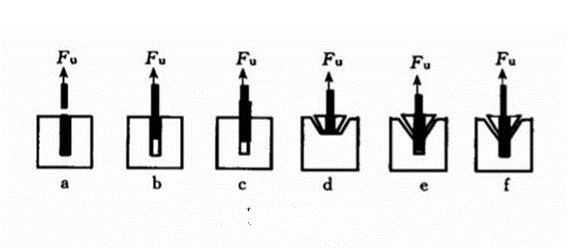1. What is the anchoring technology?
The anchoring planting technology in concrete is a simple and effective connection and anchoring technology, which has been widely used in construction. At present, it is no longer necessary to carry out a large number of excavation on the anchoring ribs of the concrete structure, and only after drilling in the reinforced part, the anchoring agent can be used as the binder of the steel and concrete to ensure good anchorage of the steel and concrete. The connection not only reduces the workload, but also reduces the damage to the original concrete structural members.
2. Influence of anchorage depth on concrete members
As one of the important reinforcement techniques, the anchoring technology of planting bar is one of the important factors affecting the effect of planting bar. It can directly affect the reinforcement effect of the building. Therefore, in order to ensure the reinforcement effect and structural safety, the strict regulations on the depth of the planting bar in the specification are necessary.

The anchoring depth of the planting bar is different, and the resulting anchoring failure modes are different. It is mainly divided into concrete vertebral body failure, reinforced glue and concrete or steel viscous failure and steel yield failure.
3. What are the main factors affecting the anchoring force of the anchoring technology?
While ensuring that the depth of the planting bar is designed according to strict specifications, the anchoring force of the anchoring technology depends mainly on the quality of the glue.
It can be selected from three aspects: mechanical properties, health and environmental protection, and pull test. See if the planting bar adhesive manufacturer can provide the safety appraisal report and the non-toxic test report.
4. Does the welding after the reinforcement have an effect on the anchoring force?
After the anchor is planted, it is often necessary to weld and lengthen. Since the welding is only for a short time, the test shows that the welded part is more than 30cm from the anchoring end, and has no adverse effect on the anchoring force. If the weld is next to the anchor end, it is best to weld the anchor first. Spot welding of the nut and the screw have no effect on the anchoring force.
5. The spacing between the anchors in the anchoring of the planting bar is too small. How can it be solved?
In the construction of the reinforced bar, the distance between two adjacent anchors should be greater than 3d, but some components, such as studs, have limited section size, and the beams and columns are staggered. It is often encountered that the holes that can be drilled are limited or close together. Some actual clearance is only about 1d. At this time, in order to eliminate the adverse effects of the group anchor, a flexible measure for combining the steel bars and increasing the anchor length can be adopted.
6. When the planting bar is anchored, the steel bar in the substrate is too dense to form a hole. What should I do?
The steel bar in the substrate is too dense, and it is difficult to form the hole. It is a common problem encountered in the construction of the planting bar. The larger the diameter of the anchor bar, the more prominent the problem. For example, 25 steel bar reinforcement requires a hole diameter of more than 30 mm, but sometimes the base material has a clearance of only 28 mm, which makes it impossible to form a hole. At this time, according to the principle of equal cross-sectional area, two 18-anchor ribs can be used instead, and the hole diameter of the hole is only 22 mm, which solves the problem that the hole cannot be formed. However, the drilling depth should not be reduced and should be the same as the original design depth.
Regarding the anchoring technology, if you have any other questions, please call Nanjing Mankate Technical Consultant.
Link to this article: https://www.njmkt.net/Article/gyzjmgjsd6.html
(Editor: Nanjing Mankate, if you need to reprint, please indicate the source)